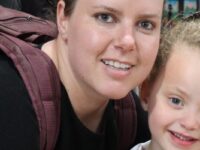Lord of the Trees’ drone-based survey results are paired with AI technology to find scientific solutions to climate change and biodiversity loss.
Having launched Australia’s first EcoXpo in Australia to showcase how easy and achievable sustainable living can be for consumers and businesses alike, Aymeric Madous sold that business six years later. After a brief foray into the world of property management, Aymeric founded Lord of the Trees at the end of 2019.
“The world is in the midst of an undeniable climate crisis,” Aymeric says. “In 2017, for example, the equivalent of 40 football fields were cleared or burnt every minute of every day to produce timber or make way for soy and palm oil crops and cattle pasture. Late in 2019 and into 2020, Australia lost 21 per cent of our forests through bushfire.
“Trees are an invaluable part of our very existence: they provide oxygen we breathe, draw down carbon dioxide from the atmosphere, provide food, shelter, clean water and regulate our weather patterns,” Aymeric adds. “It’s estimated that 22 trees are needed to meet the demand of one person per day.”
This knowledge was the key driver Lord of the Trees. After watching a documentary by Sir David Attenborough on the transformation of the Galapagos Islands from a barren volcanic landscape into one of lush vegetation through wind-borne seeds, Aymeric set out on a mission to emulate Mother Nature through drone technology, science and environmental expertise to create an equivalent method of effective natural seeding.
Lord of the Trees has developed autonomous pre-programmed drones that replant deforested areas around the world. Working with the mining sector, local governments, the agricultural industry and landowners, the organisation is helping accelerate reforestation efforts and achieve planting on a mass scale at a significantly reduced cost.
While seedlings offer instant visual gratification, they have a failure rate of 60–70 per cent and producing them is costly in terms of labour, energy and transportation. Lord of the Trees, therefore, has adopted a direct seeding model, partnering with CSIRO to develop its Seedpod technology in order to enhance growth rates.
“While this takes patience in waiting for seeds to germinate and then grow, this method creates a root system that is 70 per cent stronger than when planting seedlings,” Aymeric explains. “And the failure rate of seeding is only around 15 per cent – up to 50 per cent lower compared to using seedlings.”
The use of drones enables Lord of the Trees to plant five hectares of seeds per hour, whereas manual methods only cover one hectare in the same period of time.
“One of our drones can plant 160,000 seed pods in a day compared to only 800 seedlings planted by hand,” Aymeric says. “We rely on artificial intelligence to pre-program the drones so they can work day and night. They are able to shoot two seed pods per second. We just need two each day to swap batteries and reload seed pods into the drone.”
The company is also conducting drone-based surveys whose results are paired with AI technology to find scientific solutions to climate change and biodiversity loss, and using its drones to help generate ecological mapping tools to guide global restoration efforts. “These maps can show where we should focus our restoration efforts to have the greatest impacts on carbon capture and biodiversity,” Aymeric explains.
The business has just closed its first capital raise with a globally recognised venture capital firm, which will help the company fund branching out to provide services to the American farming industry and the expansion of reforestation projects in Europe.
This article first appeared in issue 34 of the Inside Small Business quarterly magazine
















